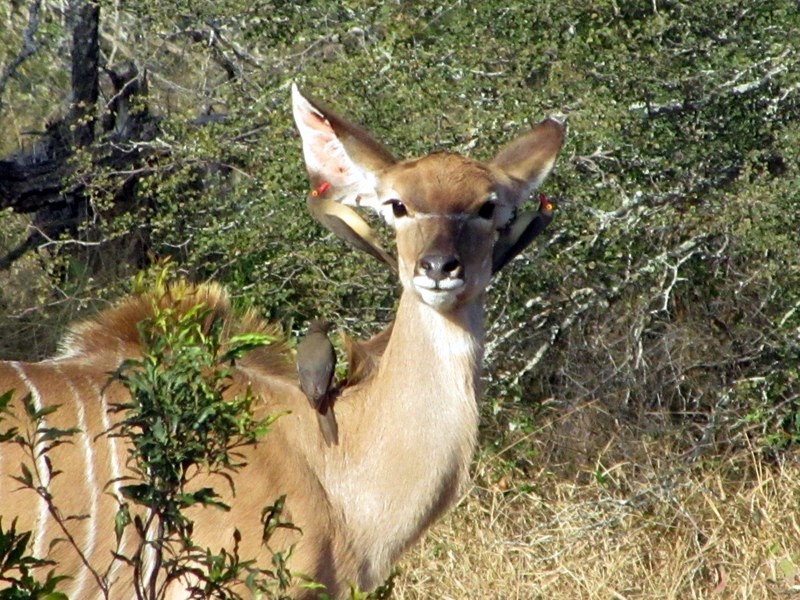
In the bush, everything has its place. Nature was designed to exist without human interference, and when you are lucky enough to spend a good period of time on safari, you will start to notice how the puzzle fits together.
The symbiosis between the plants, the insects, the birds and the mammals is astonishing. The relationship between oxpeckers and their hosts, which vary in size from warthogs to giraffes, is one of the most interesting. We captured this moment with a kudu and a couple of red-billed oxpeckers and watched as the giant-eared antelope was groomed and freed of ticks and other parasites dwelling in her ears.
Oxpeckers are most often found around herds of mammalian herbivores and benefit greatly from their jobs as parasite-assassins. They are not only doing the mammals a favour by keeping them relatively tick-free; the oxpecker takes advantage of the easy meals and uses its host’s fur and dung to build a nice, comfy home.
Co-operative breeders, oxpeckers stay in groups of 5 or 6 birds, of which there is only 1 breeding pair. They nest in natural tree-holes and line their nests with clumps of hair they have pulled off the backs of impala, kudu, and other antelope. The dung of rhino and buffalo is used as an adhesive to stick the components of the furry nest together.
The call of the oxpecker is an unmistakeable one and is recognised by game rangers and wildlife alike. The shrill ‘chip-chip-rasp’ call is a warning that predators are in the area. If the oxpecker has sensed danger, it will cry out and alert its herbivore hosts, which then have the opportunity to escape. The rangers at nThambo Tree Camp pay attention to the cry of the oxpeckers, as they often lead to exciting predator sightings, or to awe-inspiring sightings of some of Africa’s largest herbivores.
For the most part, the relationship between oxpeckers and their herbivorous hosts is beneficial to both parties, but there is a chance that oxpeckers become somewhat parasitic. Their constant ‘grooming’ can prevent the healing of wounds on the skin of the hosts. Pecking at scabs and semi-healed abrasions can cause re-infection, leading to energy loss and ultimately weakening the animal.
In the wild, it all comes down to survival of the fittest and as helpful as these red-billed birds can be, there is a risk of injury from over-enthusiastic pecking. And of course, the risk of following the oxpeckers and arriving at a herd of impala instead of the rhino you were hoping to find…




